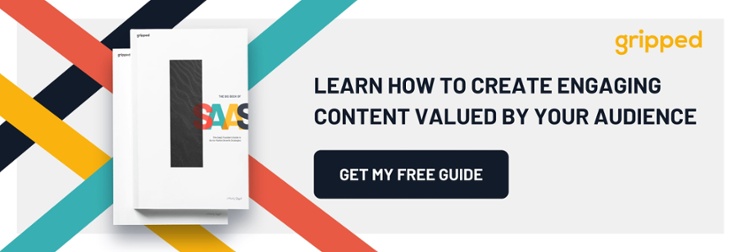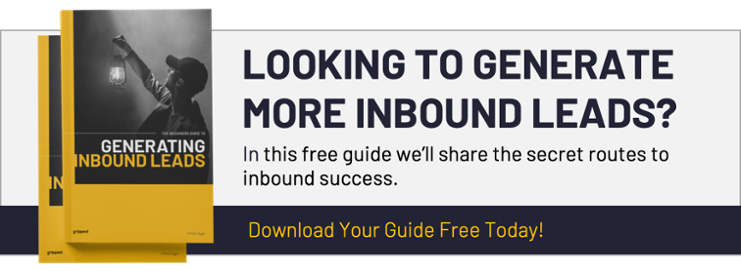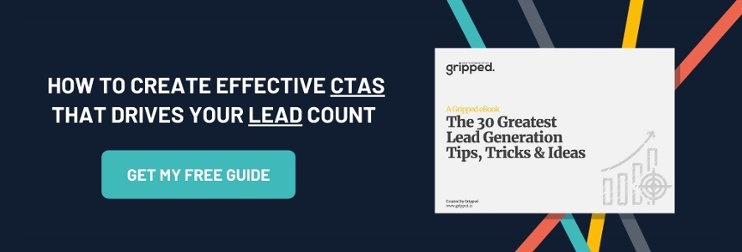Inbound strategies applied to outbound techniques can improve your demand generation conversion
Retargeting is essential to keeping your brand forefront in the minds of your target market audience. Most people who visit your website will likely never return under natural circumstances. Tactful retargeting campaigns significantly improve the likelihood that you can transform a single online visit into an ongoing relationship that will result in a sale. Content marketing is key to starting that relationship and vital to the successful continuation of contact through retargeting campaigns.
The B2B Marketing ‘Retargeting Paradox’
Sustained contact is critical to transforming fleeting online interactions with prospect customers into sales. Direct messaging and targeted advertising are the two main retargeting tools available for accomplishing this outcome.
The problem is that poorly executed repeat contact can be annoying. Annoyed prospects will be driven away, rather than drawn closer — irrelevant or over the top retargeting campaigns will do more harm than good. They will also eat up your marketing budget.
It is hard, however, to distinguish between interactions that will improve your relationship with prospects and those that will be seen as obnoxious. There is a fine line between tactful retargeting strategies and pestering advertising campaigns.
Part 1: The B2B Content Marketing Solution to Retargeting Woes
Successful retargeting campaigns require moderation. That means making the most out of every interaction. It also means framing contact as informative, rather than a sales pitch. This allows you to increase the amount of retargeting contact while minimising the perception that you are engaging in ‘spammy’ sales tactics. The key to delivering this outcome is providing added value within interactions curated to the specific needs of individuals. Content helps you do both of these things.

Content marketing provides information about prospects
Content marketing (particularly in the form of a blog) expands and diversifies your web presence. This delivers SEO benefits. From a retargeting perspective, it also provides you with more opportunities to collect information about what specifically interests visitors to your website. For example, if someone looks at all of your product pages, but then only reads blogs about a particular facet of your service offering — that gives you a good idea about what marketing material they would find relevant.
That information can be used to guide advertising campaigns. Rather than simply buying targeted ad placements showcasing your brand, you can advertise products directly related to that individual’s interactions with your web presence. You could even simply advertise content similar to that with which a prospect has already interacted. This allows you to advertise your brand, but in the context of continuing to add value.
Content marketing generates freely given contact details
Content provides avenues to gain contact information and intensify the level of engagement. ‘Premium content’ or ‘gated material’ is content that requires the submission of an email address to access. This normally takes the form of an eBook, guide, white paper, template or product trial. Premium content allows you to provide a valuable piece of material that showcases your brand’s expertise, while also gaining the consent of a prospect to contact them via a direct channel. Gated material can be advertised in calls-to-action (CTAs) within a blog, your website or targeted ad placements.
Content marketing creates a reason to re-establish contact
Content then provides a casual way to re-establish contact while continuing to deliver value throughout the interaction. When executing a drip email campaign, for example, offering a free eBook or guide, rather than simple marketing copy, transforms that interaction into one that is aimed at benefiting that individual. You create a situation centred around the customer rather than your ‘bottom-line’, improving their experience and increasing the likelihood that you make a sale.
If you can frame the promotion of a product or service as ‘valuable information’ rather than a sales pitch, you change the way prospect customers interact with that information. Prospects will read more, with a greater attention to detail if they feel they are being benefited directly by that interaction. They will also approach that information with a more open mind and form conclusions on their own over which they feel a greater level of agency.
If you produce enough content, you can even encourage prospects to sign up for regular ‘newsletters’. You can easily create a newsletter through repackaging several blogs and sending them out as an email. This allows a way to stay in regular contact without being intrusive. Getting prospects to sign up to receive marketing material is the ideal scenario from a retargeting perspective. In all of these retargeting scenarios, it is simply important to tailor each delivery of content to the specific interests and needs of a prospect.

Part 2: How To Maximise Leads for Sales When Using Content Marketing For B2B Retargeting Campaigns
Successful marketing relies on doing more than ‘one’ thing. This means that the key to a successful retargeting campaign is about placing that campaign in a broader context. The successful deployment of content marketing for retargeting purposes, therefore, should only be one aspect within a broader retargeting campaign anchored within a larger marketing strategy. Content marketing, however, should also play a role in your larger inbound strategy off of which your retargeting campaigns are based.
For B2B businesses, both your inbound strategies and retargeting campaigns should sit within a broader ‘account-based marketing’ (ABM) strategy that takes into account several different marketing methodologies. This approach will also help you develop the right type of content for both inbound and retargeting purposes.
Use content within multiple retargeting strategies
There are two types of retargeting campaigns — ‘pixel-based’ retargeting and ‘list-based’ retargeting. Pixel-based retargeting is centred on ‘cookies’. The actions of an individual on your website trigger automated actions within your retargeting platform.
List-based retargeting is centred around information you already have. This information can be gained in a number of ways, one being contact details generated by gated ‘premium content’. Information is then fed into social media platforms to direct targeted ads or used to undertake ‘direct contact’ retargeting campaigns.
It is important to take advantage of both of these strategies, along with broader strategic decisions such as site retargeting, search retargeting and the use of different retargeting platforms to automate your retargeting campaigns. All of these types of retargeting campaigns can benefit from the inclusion of relevant content. Determining relevance is your next challenge.
Segment your audience: create and deliver relevant content
Within the two types of retargeting campaigns, you need to deliver tailored and relevant content. Drill down to the greatest level of detail possible. For example, if your company sells a number of products or services, make sure that the pixel-based retargeting ads triggered by visiting certain blogs or particular landing pages are relevant to that material. Place calls-to-action (CTAs) alongside blogs for premium content that is related to that post. If someone downloads an eBook, follow up with emails that are relevant to that topic.

You will probably want to think about several personas within your broader ‘account-based marketing’ strategy focused around the companies you are looking to make customers. Think about who you need on your side to make a sale, then think about the people that can put you in contact with that person — those are all relevant personas to your sales funnel. Assign different interactions with your website as indicators of the likelihood that someone fits into one of several ‘marketing personas’.
Take relevance to the next level using the ‘buyer’s journey’
Each persona can then be subdivided across the ‘buyer’s journey’. This is a phrase that references the process buyers go through as they become aware of, evaluate and then purchase a product or service. It includes three stages:
- Awareness: This is when a buyer might first become aware of your brand. They are looking to solve a problem, find an answer or meet a need. They want high-level educational content to get them pointed at an answer.
- Consideration: At this point, the buyer has defined their problem and is looking for specific information to solve it. They want more detailed information oadmapping an actionable solution.
- Decision: At this point, the buyer has made a decision and is simply looking for confirmation that what they have chosen is the right choice.
Looking at content marketing from this perspective will help you deliver relevant content at the right time. It will also help you write content. It is important that you have at least one piece of contenttargeted at each identified persona for each stage of the buyer’s journey. This will provide you with the material you need to craft relevant retargeting campaigns aided by appropriate content marketing.
Use metrics and cross-pollinate content
As your retargeting campaign progresses, look at results. For example, if you notice that people who download one particular eBook consistently become customers, look at ways to get that eBook in front of other relevant prospects. Look at your most popular blogs and think about ways to rewrite them to fit the priorities of different personas or different stages of the ‘buyer’s journey’. Make sure that whatever topics appear important to your audience are presented on your website in a number of ways that fit the level of detail different people will be interested in consuming.
Summary: Content Marketing Turns Ads into Added Value
The chances that a single visit to your webpage will turn into a sales conversion are tiny — particularly in B2B. Even for B2C businesses, studies put this number as low as 2%. For B2B businesses, it is essential to follow up and build a relationship in order to progress leads through a sales funnel.
Retargeting marketing campaigns are key to this sustained contact. Content marketing is the key to transforming these campaigns from obnoxious advertisements into a pathway to ever-increasing familiarity and respect for your brand. Content attracts prospect customers to your website, delivers insight into the priorities of visitors, supplies something of value in exchange for contact information and creates a casual and value-added reason to re-contact prospects.
In order to make the most out of content marketing within a retargeting campaign, you need to focus on relevancy. Luckily, creating relevant content is vital to the success of traditional inbound content marketing strategies. In order to apply this success to retargeting, you simply need to think about how you segregate and deliver content based on the information you have on prospects and how they interact with your website. This process should be undertaken within a wider marketing strategy for complementary effect.
Modern buyers have been empowered by the internet. Customers expect to control their own buyer process and want added value delivered to them throughout that sales journey. Content marketing is the key to delivering those prerequisites. Retargeting is how you retain people’s attention in a fast-paced and complex digital world. Together, they help you turn fleeting contact into long-term relationships and sales.
